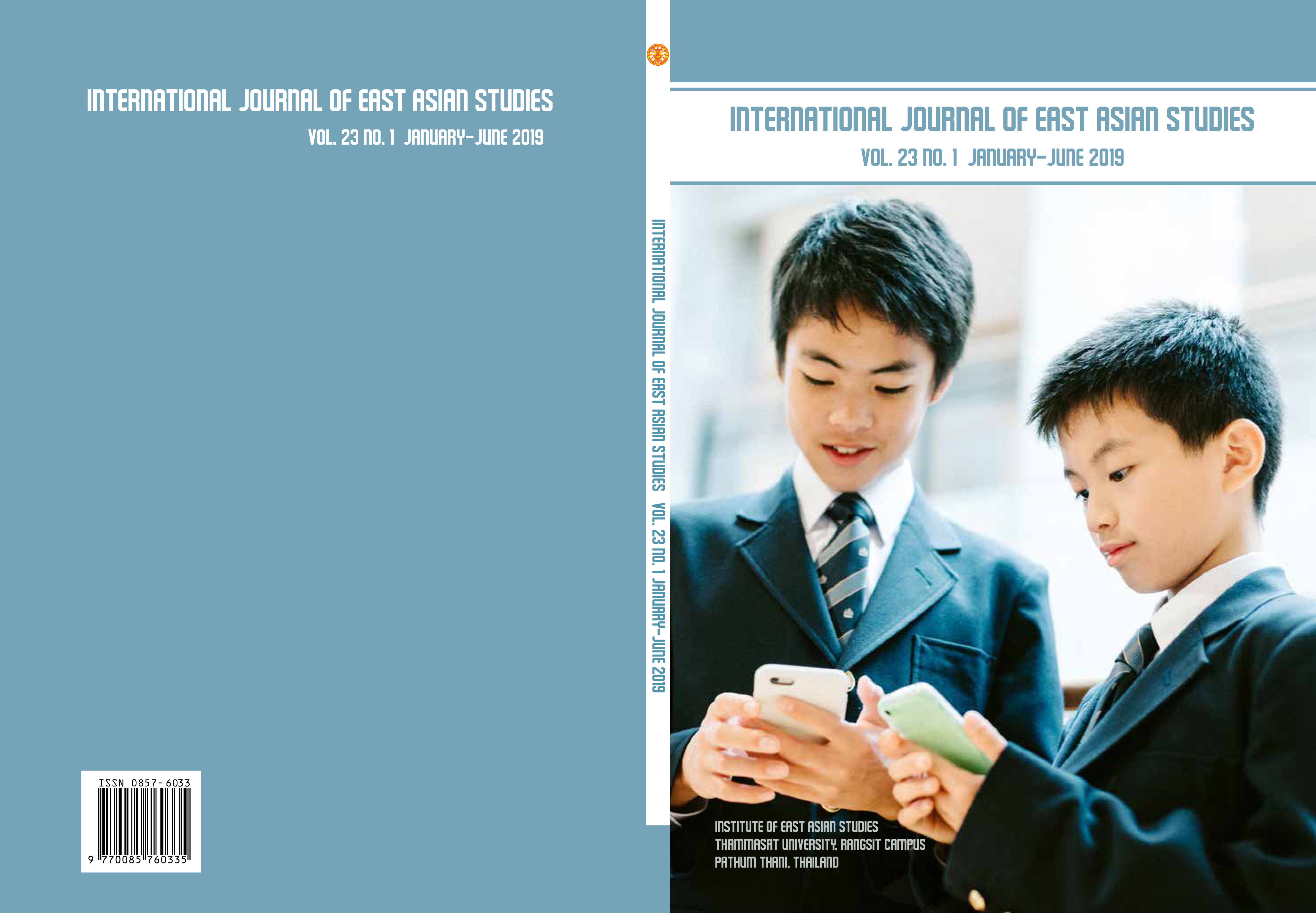TCAS and the Stable Matching Problem: Theory and Implementation
Keywords:
TCAS, Thai university admission, college admission problem, stable matching, Gale-Shapley algorithmAbstract
This article presents a summarized history of the university central admission systems in Thailand, as well as some details of the newly adopted Thai university Central Admission System (TCAS). Some key results in matching theory regarding the college admission problem are also reviewed. The article tries to build a bridge between the theory and real-world phenomena by noticing that some main problems in TCAS are symptoms of unstable matching and possible strategic manipulation. It then suggests that the Gale-Shapley student-optimal mechanism, using the celebrated Deferred Acceptance Algorithm (DAA), should be employed to prevent instability and induce truthful revelation from every student.
Downloads
References
กระทรวงศึกษาธิการ. (2560, 23 พฤษภาคม). ประกาศกระทรวงศึกษาธิการ เรื่อง นโยบายการคัดเลือกบุคคลเข้าศึกษาในสถาบันอุดมศึกษาระบบใหม่.
ที่ประชุมอธิการบดีแห่งประเทศไทย. (2560, 13 กรกฎาคม). การชี้แจงระบบการคัดเลือกบุคคลเข้าศึกษาในสถาบันอุดมศึกษา (Thai university Central Admission System: TCAS) ปีการศึกษา 2561. สืบค้นจาก https://tcas.cupt.net/src/tcas61-detail.pdf
เบญจมาศ เกกินะ. (2561, 4 มิถุนายน). ย้อนอดีต 60 ปี จาก ‘เอ็นทรานซ์’ ถึง ‘ทีแคส’ ทำไม?? ยิ่งปรับ-ยิ่งห่วย. มติชนออนไลน์, สืบค้นจาก https://www.matichon.co.th
ประภาวัลย์ ชวนไชยะกุล. (2554). การศึกษาสภาพและผลกระทบของโรงเรียนกวดวิชาในประเทศไทย. (ปริญญานิพนธ์ปริญญาดุษฎีบัณฑิต). มหาวิทยาลัยศรีนครินทรวิโรฒ, กรุงเทพมหานคร.
สมาคมที่ประชุมอธิการบดีแห่งประเทศไทย. (2561ก). ระบบคัดเลือกบุคคลเข้าศึกษาระดับอุดมศึกษา TCAS ปีการศึกษา 2561. สืบค้นจาก https://tcas.cupt.net
สมาคมที่ประชุมอธิการบดีแห่งประเทศไทย. (2561ข). คู่มือระบบ TCAS 62 สำหรับนักเรียนและผู้สมัคร.
สุริยา ฆ้องเสนาะ. (2561). TCAS ระบบการคัดเลือกบุคคลเข้าศึกษาในสถาบันอุดมศึกษารูปแบบใหม่. สำนักวิชาการ สำนักงานเลขาธิการสภาผู้แทนราษฎร, สืบค้นจาก https://www.parliament.go.th/library
Translated Thai References
Krasuangsueksathikan. (2017, May 23). Prakat krasuangsueksathikan ruea nayobai kan khatlueak bukkhon khaw sueksa nai sathaban udom sueksa rabop mai.
Thi prachum athikanbodi hae prathet thai. (2017, July 13). Kan chichaeng rabop kan khatlueak bukkhon khaw sueksa nai sathaban udom sueksa (Thai university Central Admission System: TCAS) pikansueksa 2561. Retrieved from https://tcas.cupt.net/src/tcas61-detail.pdf
Kekina, B. (2018 [2561]). Yon adit 60 pi chak “Entrance” thueng “TCAS” thammai?? ying prap - ying haui. Matichon, Retrieved from https://www.matichon.co.th
Chuanchaiyakul, P. (2011). Kan sueksa saprap lae phonkrathop khong rongrian kuatwicha nai prathet thai. (doctoral dissertation). Srinakharinwirot university, Bangkok, Thailand.
Samakhom thi prachum athikanbodi hae prathet thai. (2018A). Rabop kan khatlueak bukkhon khaw sueksa radap udom sueksa pikansueksa 2561. Retrieved from https://tcas.cupt.net
Samakhom thi prachum athikanbodi hae prathet thai. (2018B). khumue rabop TCAS 62 samrap nakrian lae phusamak.
Khongsano, S. (2018[2561]). TCAS Rabop kan khatlueak bukkhon khaw sueksa nai sathaban udom sueksa rupbaep mai. Office of Academic, The Secretariat of the House of Representatives, Retrieved from https://www.parliament.go.th/library
เอกสารภาษาอังกฤษ
Abdulkadiroglu, A., & Sonmez, T. (2003). School choice: A mechanism design approach. American Economic Review, 93(3), 729-747.
Alcalde, J., & Barbera, S. (1994). Top dominance and the possibility of strategy-proof stable solutions to matching problems. Economic Theory, 4(3), 417-435.
Balinski, M. & Sonmez, T. (1999). A tale of two mechanisms: Student placement. Journal of Economic Theory, 84(1), 73-94.
Chen, Y., & Kesten, O. (2017). Chinese college admissions and school choice reforms: A theoretical analysis. Journal of Political Economy, 125(1), 99-139.
Dubins, L. E., & Freedman, D. A. (1981). Machiavelli and the Gale-Shapley algorithm. American Mathematical Monthly, 88(7), 485-494.
Ergin, H. I. (2002). Efficient resource allocation on the basis of priorites. Econometrica, 70(6), 2489-2497.
Gale, D., & Shapley, L. S. (1962). College admissions and the stability of marriage. American Mathematical Monthly, 69(1), 9-15.
Gale, D., & Sotomayor, M. (1985). Some remarks on the stable matching problem. Discrete Applied Mathematics, 11(3), 223-232.
Kesten, O. (2012). On two kinds of manipulation for school choice problems. Economic Theory, 51(3), 677-693.
Roth, A. E. (1982). The economics of matching: Stability and incentives. Mathematics of Operations Research, 7(4), 617-628.
Roth, A. E. (1985). The college admissions problem is not equivalent to the marriage problem. Journal of Economic Theory, 36(2), 277-288.
Sonmez, T. (1997). Manipulation via capacities in two-sided matching markets. Journal of Economic Theory, 77(1), 197-204.
Sonmez, T. (1999). Can pre-arranged matches be avoided in two-sided matching markets?. Journal of Economic Theory, 86(1), 148-156.



